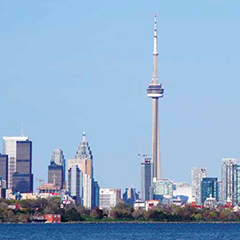At PES, we’re committed to providing timely commentary and insights to help our readers secure fresh opportunities and address key challenges. With that in mind, we’re pleased to present the very latest insight from Canada, courtesy of KPMG. The country has seen significant activity in the sector in the last 18 months – but is it set to continue?
All-in rates remain attractive despite recent volatility
Project debt financing conditions for Canadian wind energy assets have improved since the global economic recession of 2008-2010 both in terms of lender interest and rates, however recent volatility in the market continues to present challenges.
Medium-sized well-structured projects continue to be able to secure long-term debt at favourable rates from a diverse group of financiers comprising North American banks, Canadian LifeCos and Japanese banks. Wind energy projects underpinned by long-term power purchase agreements with provincial utilities or agencies continue to attract attention from both domestic and international investors that view Canada as a safe investment jurisdiction.
Spreads have also decreased. “Credit spreads have decreased by around 50 basis points since the financial crisis of 2009 and early 2010,” explained Jean-François Thibodeau, Vice-President and Chief Financial Officer at Boralex. “For 15-20 year money we are now seeing spreads in the 250-300 bps range. The benchmark rate has also come down to very low levels, meaning that we are at all-in rates of around 5%, which is very attractive.”
That said, recently volatility in the debt markets has edged the benchmark rate higher in the last two months. Ten-year Canadian Government bonds are now yielding 2.47%, a significant increase on yields of 1.80% only two months ago. Developers can still secure debt project finance at attractive historical rates, but this may not last forever. Uncertainty on the future of the US Federal Reserve’s quantitative easing program reinforces the need for developers requiring long debt financing to get to the front of the line to secure pricing that is still at historical lows.
Capacity remains limited for
large projects
With the exit of most major European banks active in long-term lending, developers have had to tap other funding sources, including LifeCos, Japanese banks and the limited number of active German banks. Alternative shorter term structures are another option but with obvious refinancing risks. While there are multiple sources of long-term debt that matches the terms of PPAs, only a few can write cheques in excess of $75 million. Therefore a large club of lenders is needed to secure debt for larger projects.
“Some of the larger projects have had difficulties in getting financed, especially the ones that require $500 million or more,” commented Hugo Bouchard, Chief Investment Officer & General Manager of Eolectric. “This is primarily due to many European banks pulling out of the market for long-term debt. The most active banks in Canadian wind are now Japanese and German banks. The LifeCos also finance several wind projects every year. The institutional players will go up to the end of your PPA, which means they will finance up to 20 years in Québec. The banks will not usually lend beyond 18 years.”



























